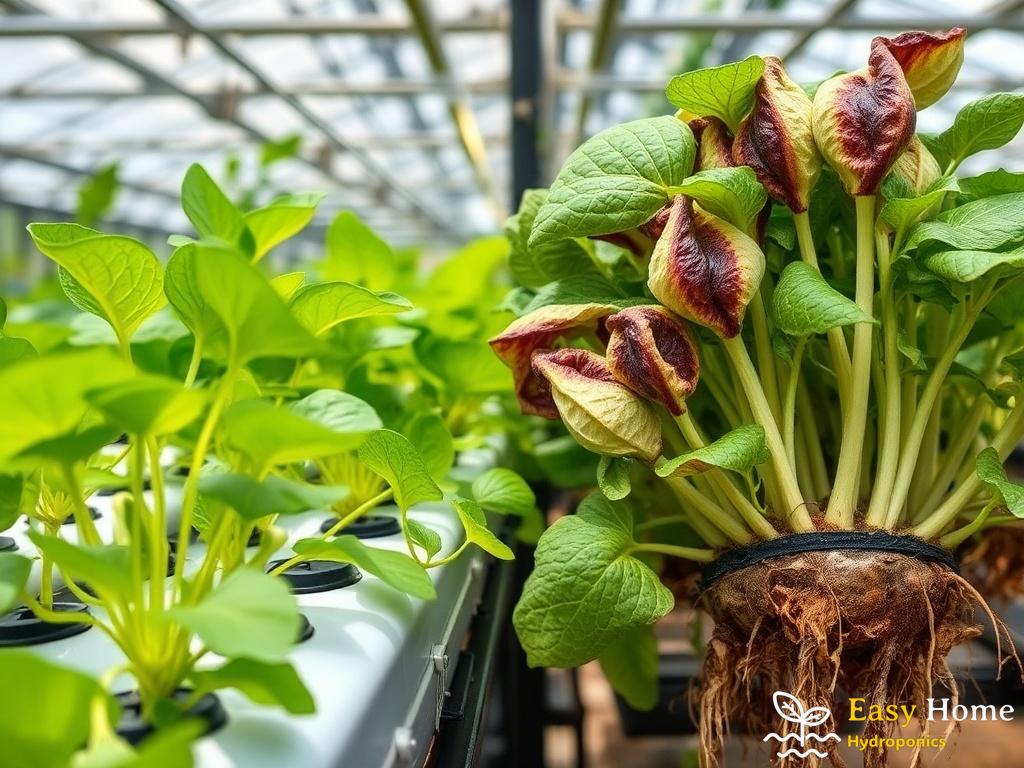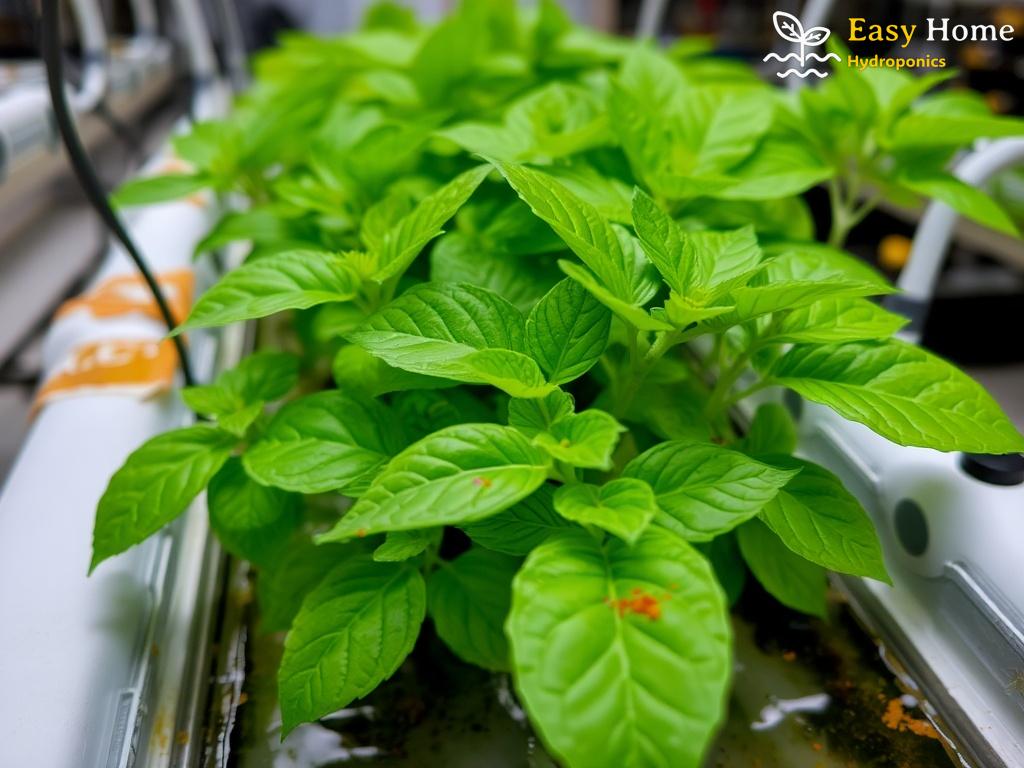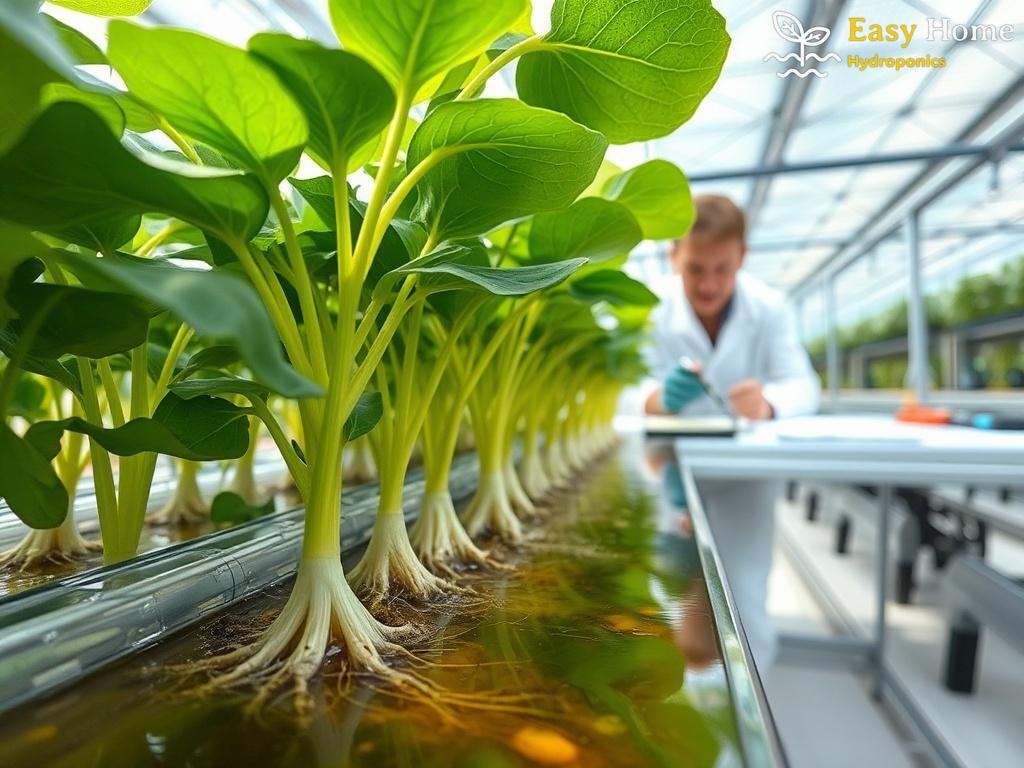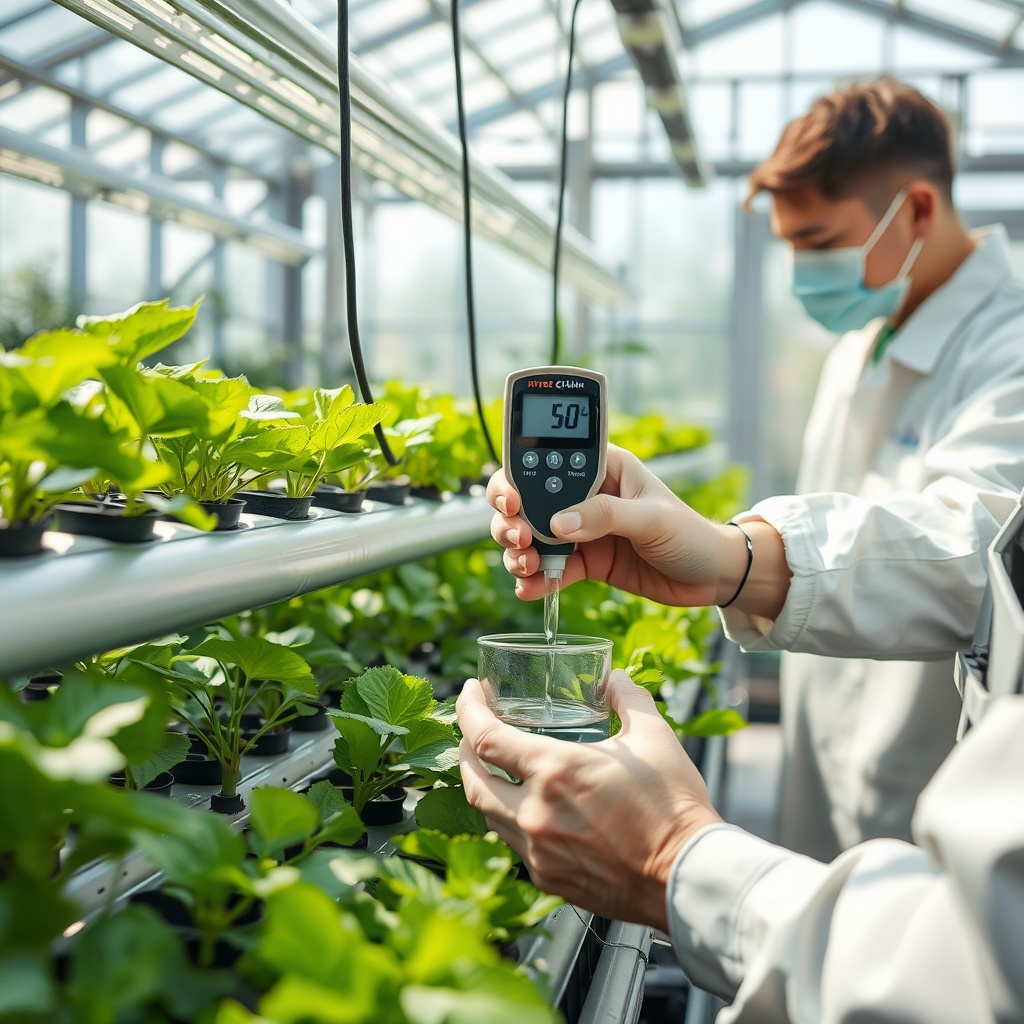Understanding Erwinia Soft Rot: The Hidden Threat

Hydroponic systems have revolutionized the way we grow plants, offering growers the ability to cultivate high-quality crops without soil. However, lurking in the shadows of this advanced cultivation method is a dangerous foe: Erwinia soft rot. This bacterial menace can devastate crops, leading to significant losses if not detected and managed promptly. Understanding Erwinia soft rot is crucial for any hydroponic gardener aiming for success.
Identifying Erwinia soft rot in its early stages can mean the difference between a thriving hydroponic garden and a total crop failure. The symptoms are often subtle yet alarming. Look out for the following:
- Water-soaked lesions: Initially appearing as dark, wet spots on the plant tissue.
- Soft, mushy texture: Affected areas may feel squishy to the touch.
- Foul odor: As decay progresses, a characteristic unpleasant smell will emanate from the infected plants.
These signs often indicate that Erwinia has taken hold, and immediate action is required to prevent further spread.
Combatting Erwinia soft rot involves a multifaceted approach. Here are some effective strategies to consider:
- Maintain cleanliness: Regularly sanitize your hydroponic system and tools to minimize bacterial presence.
- Optimize environmental conditions: Ensure proper airflow, humidity, and temperature to create an inhospitable environment for bacteria.
- Prompt removal: Immediately remove and dispose of infected plants to prevent the spread of the bacteria.
By implementing these proactive measures, you can significantly reduce the risk of an Erwinia outbreak in your hydroponic setup.
Preventive Measures: Shielding Your Hydroponic System
In the ever-evolving world of hydroponics, the threat of Erwinia soft rot looms like a dark cloud, ready to rain on the parade of even the most diligent gardeners. To truly thrive, it’s essential to adopt a proactive stance against this bacterial invader. By implementing strategic preventive measures, you can fortify your hydroponic system and safeguard your plants from the devastating effects of Erwinia. Let’s dive into effective strategies that will help you maintain a healthy and flourishing hydroponic environment.
One of the most effective ways to combat Erwinia soft rot is by establishing an environment that is unwelcoming to bacterial growth. This involves meticulous attention to various factors such as water quality, nutrient balance, and overall system hygiene. By controlling these elements, you create a fortress around your plants.
- Water Quality: Regularly monitor the pH and electrical conductivity of your water to ensure optimal conditions for plant growth while preventing bacterial proliferation.
- Nutrient Management: Avoid over-fertilizing, as excess nutrients can create a favorable environment for pathogens. Utilize a balanced nutrient solution tailored to your plants’ specific needs.
- System Hygiene: Implement a strict cleaning routine for all equipment and components, using approved sanitizers to eliminate any lingering bacteria.
While environmental control is crucial, empowering your plants to resist pathogens is equally important. Selecting resistant plant varieties can significantly reduce the risk of soft rot. Furthermore, adopting a holistic approach to plant health can bolster their defenses.
| Plant Variety | Resistance Level | Notes |
|---|---|---|
| Tomato | High | Choose disease-resistant hybrids for better performance. |
| Cucumber | Medium | Monitor closely for early signs of infection. |
| Lettuce | Low | Consider using protective measures like row covers. |
In the battle against Erwinia soft rot, knowledge is your best ally. Regular monitoring can make a significant difference in identifying potential problems before they escalate. Develop a habit of inspecting your plants frequently for any unusual symptoms or changes in their condition.
By integrating these preventive measures into your hydroponic routine, you will not only shield your system from Erwinia but also foster a thriving environment for your plants. Remember, the key to success lies in preparation and vigilance. Stay informed, stay proactive, and watch your hydroponic garden flourish.
Identifying Symptoms: Catching Soft Rot Early
In the intricate world of hydroponics, where every detail counts, being able to identify the early signs of Erwinia soft rot is akin to having a sixth sense. The ability to spot potential threats before they escalate is crucial for safeguarding your crops. By honing your observation skills and understanding the distinctive symptoms, you can act swiftly and mitigate the impact of this bacterial menace.
When it comes to Erwinia soft rot, time is of the essence. The sooner you can diagnose the problem, the better your chances of saving your plants. Here are the primary symptoms to be vigilant for:
- Water-soaked lesions: These start as small, darkened areas on leaves or stems, gradually expanding and becoming more pronounced.
- Soft, mushy texture: Affected plant parts exhibit a squishy feel, indicating tissue breakdown and decay.
- Foul odor: A telltale sign of advanced infection is a pungent, rotten smell emanating from the infected areas.
Understanding these symptoms is vital, but it’s equally important to know how they can vary across different plant species. For instance, some vegetables may display more pronounced symptoms than others, which can lead to misdiagnosis. Below is a comparison of symptom presentation across common hydroponic crops:
| Plant Type | Typical Symptoms | Progression Rate |
|---|---|---|
| Tomato | Water-soaked spots on leaves and stems | Fast |
| Cucumber | Mushy stem bases and yellowing leaves | Moderate |
| Lettuce | Wilting and foul smell | Slow |
To enhance your chances of catching these symptoms early, regular monitoring of your hydroponic system is paramount. Establishing a routine inspection schedule allows you to familiarize yourself with the normal appearance of your plants, making deviations more noticeable. Additionally, incorporating technological aids such as humidity and temperature sensors can further bolster your observation efforts.
In summary, being proactive and attentive to the signs of Erwinia soft rot can make all the difference in preserving your hydroponic garden. By knowing what to look for and maintaining a vigilant eye, you can take decisive action before this bacterial adversary takes hold.
Effective Treatments: Battling Erwinia Infections
When the threat of Erwinia soft rot rears its ugly head in your hydroponic garden, swift action is essential. The bacterial infection can spread like wildfire, wreaking havoc on your crops. However, with a clear understanding of effective treatments and remedies, you can take charge of your hydroponic environment. Here’s a comprehensive guide to battling Erwinia infections and ensuring the vitality of your plants.
Addressing Erwinia soft rot requires a mix of immediate interventions and long-term strategies. By determining the severity of the infection and tailoring your response accordingly, you can minimize damage and promote recovery. Below are some of the most effective treatment options available:
- Biological Control Agents: Utilizing beneficial bacteria or fungi can help outcompete Erwinia and restore balance to your system.
- Antibiotic Treatments: Certain antibiotics can be effective against Erwinia. However, caution is advised to avoid resistance.
- Fungicides: Some formulations contain active ingredients that specifically target bacterial infections like Erwinia. Always follow label instructions for safe application.
- Plant Hormones: Growth regulators can bolster plant defenses and help them recover more quickly from infection.
After implementing treatment measures, it’s crucial to keep a close eye on your plants. Regular monitoring not only helps assess the effectiveness of the chosen treatment but also allows for timely adjustments. Consider the following steps in your ongoing battle against Erwinia:
- Weekly Inspections: Check your plants for any signs of new lesions or decay. Early detection can save the rest of your garden.
- Environmental Adjustments: Ensure optimal conditions for plant health by maintaining appropriate humidity and airflow. These factors are critical in preventing recurrence.
- Record Keeping: Document your treatment steps and outcomes. This data can provide valuable insights for future prevention and management strategies.
The following table outlines various treatment options for Erwinia soft rot, comparing their effectiveness, application methods, and potential drawbacks:
| Treatment Option | Effectiveness | Application Method | Potential Drawbacks |
|---|---|---|---|
| Biological Control Agents | Moderate | Soil drench or foliar spray | Time to establish |
| Antibiotic Treatments | High | Foliage application | Risk of resistance |
| Fungicides | Moderate to High | Spray application | May harm beneficial microbes |
| Plant Hormones | Variable | Foliar spray | Requires precision in dosage |
Post-Infection Recovery: Restoring Your Hydroponic Garden
After facing the unsettling effects of Erwinia soft rot, the path to recovery can feel daunting. However, with a strategic approach, you can breathe new life into your hydroponic garden. The first step in this revitalization journey is to assess the extent of the damage. Look beyond the obvious signs of decay; evaluate the overall health of your remaining plants, as well as the condition of your growing system. This comprehensive assessment will guide your recovery efforts and help you identify which plants can be salvaged and which may need to be removed to prevent further contamination.
Implementing a Recovery Plan is crucial after the initial assessment. Begin by sanitizing your entire hydroponic setup, including all tools and surfaces. This step is essential to eliminate any lingering bacteria that could lead to a resurgence of Erwinia. Use approved sanitizers and follow the recommended guidelines to ensure thorough cleansing. Once your environment is clean, consider introducing beneficial microbes into the system. These can help re-establish a healthy balance and outcompete any remaining pathogens.
As your plants begin to recover, they will require a nutrient-rich environment to regain their strength. Adjust your nutrient solution to provide a balanced diet that caters to the specific needs of your recovering plants. Be mindful of your watering practices; overwatering can exacerbate issues, so ensure that your moisture levels are just right. Regularly monitor the pH and electrical conductivity of the water to maintain optimal conditions.
In addition to nutrients, consider employing plant hormones that can promote growth and enhance resilience. These growth regulators can help your plants bounce back more rapidly, fostering new growth and improving overall health. Remember that the recovery process may take time, and patience is key. Keep a close eye on the plants’ progress, adjusting your feeding and care regimen as necessary to support their healing journey.
Once your hydroponic garden begins to flourish again, it’s time to focus on prevention strategies that will keep Erwinia soft rot at bay in the future. This involves not only maintaining cleanliness and optimal environmental conditions but also selecting plant varieties that are naturally resistant to bacterial infections. By integrating resistant species into your setup, you can significantly reduce the likelihood of recurrence.
Monitoring your system regularly is essential to catch any potential issues early on. Establish a routine that includes frequent inspections and adjustments based on your observations. By remaining vigilant and proactive, you can ensure that your hydroponic garden not only recovers from the challenges of Erwinia soft rot but thrives in the long run. The key to success lies in your commitment to nurturing your plants and creating an environment that fosters their health and resilience.




